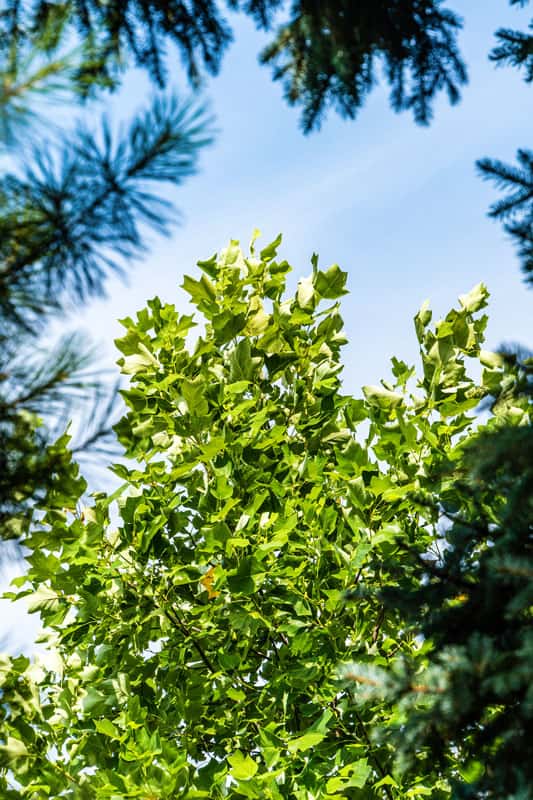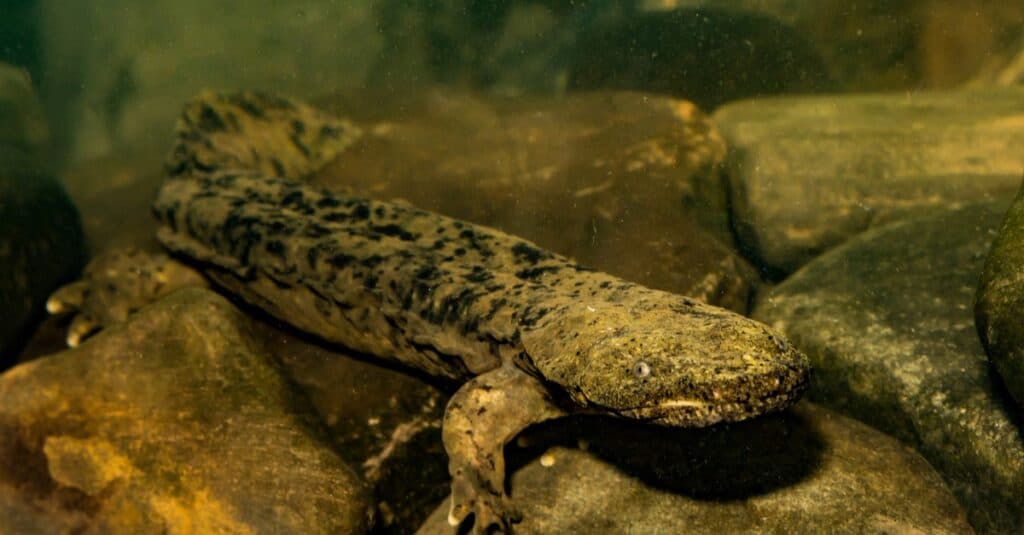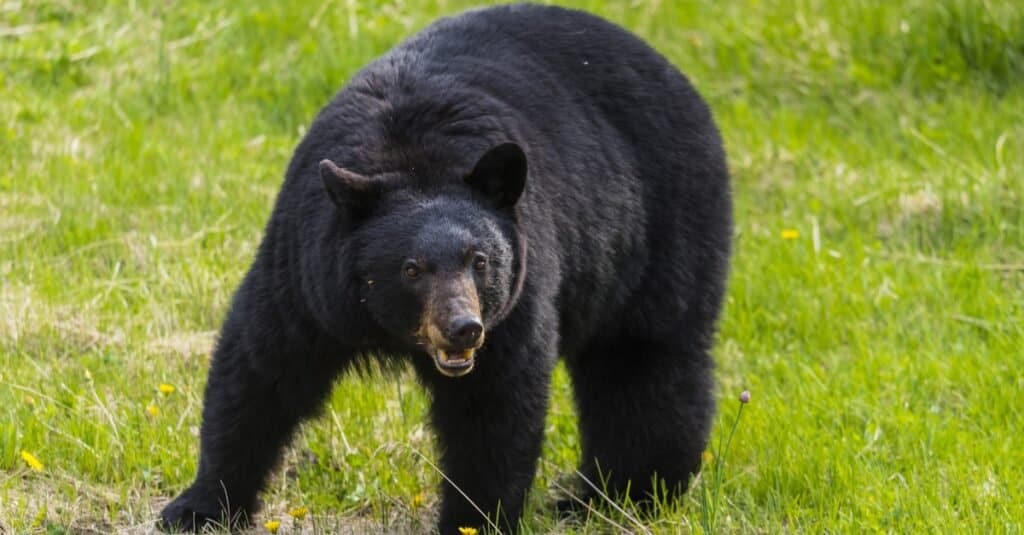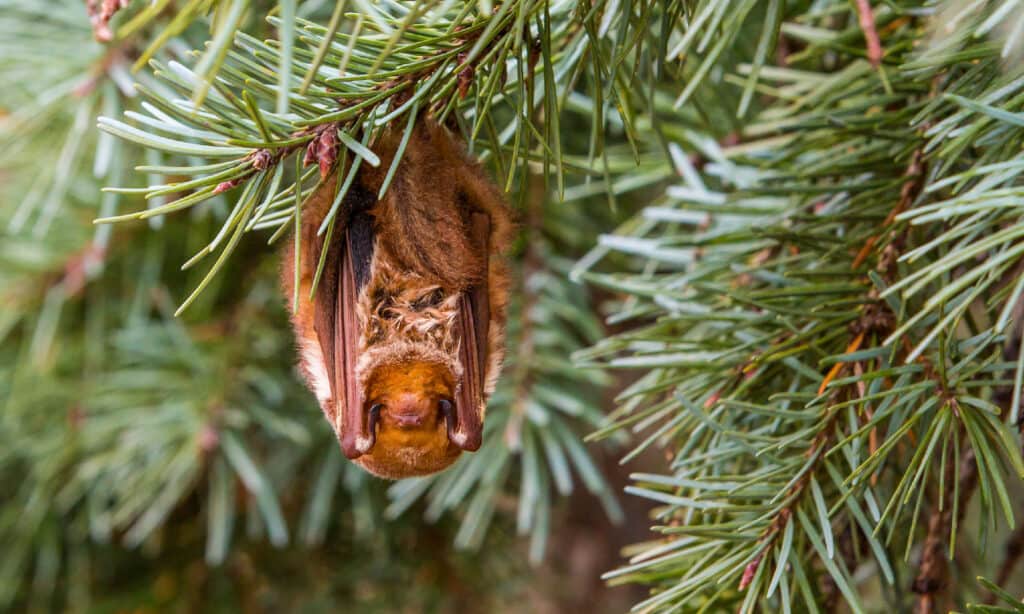When you move into the rural areas of North Carolina, you’re bound to find some interesting things you may not see elsewhere. And, if you happen to be wandering in the forests of Cherokee, North Carolina, you may stumble across the tallest tree in the state. Hint: it’s around the same height as a 20-story building!
Ready to learn more about the tallest tree in North Carolina and how it came to be? Keep reading below!
The Tallest Tree in North Carolina
How do you know a tree is one of the tallest in a state? When its nickname is “The Tall One”!
The Tall One is an American tulip tree (Liriodendron tulipifera). The American tulip tree, also known as the yellow poplar among other names, is the tallest species of eastern hardwood. As a result, it’s no surprise to see specimens of this type of tree grow well over 100 feet in height. Yet, the height of the Tall One remains one for the record books.
The name Tall One refers to the Fork Ridge Tulip Tree. This tree is located in Cherokee, North Carolina, one of the many entrances to the Appalachian Mountains of western North Carolina. The tallest tree in North Carolina was measured with drop tape, one of the most accurate methods of measurement, along with a laser. When it was last measured, in 2011, the Tall One measured 192 feet. Given that more than a decade has passed, it’s safe to say that this tree may be as tall as a 20-story building today.

The American tulip tree is one of the largest trees in North America.
©Alexander Denisenko/Shutterstock.com
About American Tulip Trees
In order to learn just how amazing it is that the Tall One has reached these impressive heights, it’s important to know the average size of American tulip trees. While they are known as the tallest eastern hardwood tree, it’s still rare to see them reach the heights of the Fork Ridge Tulip Tree.
The average American tulip tree grows to be between 80 and 150 feet tall. Their trunks can grow to be as thick as six feet in diameter. This presents such impressive sizes that the Indigenous nations historically inhabiting the native regions of this tree would carve out its massive trunk in order to create canoes.

American tulip trees are known by many other names, including the yellow poplar.
©hxdbzxy/Shutterstock.com
Wildlife Near the Fork Ridge Tulip Tree
Although the location of the Tall One is kept a secret to protect this monumental tree, you can visit Cherokee to explore the area that the tallest tree in North Carolina calls home. Here are some of the wildlife you can expect to see.
Hellbender
The hellbender is the largest salamander in all of North America. It is endemic to the eastern and central regions of the United States. This means that the region of the tallest tree in North Carolina is the perfect place to potentially meet one of these aquatic salamanders.
They can grow to be anywhere from 12 to 29 inches in length.

While looking for the tallest tree in the state, you might run across the hellbender.
©Jay Ondreicka/Shutterstock.com
Black Bear
When you think of the mountain forests, you may think of one common inhabitant: the American black bear (Ursus americanus). There are sixteen different subspecies of black bear. In Cherokee, you are most likely to see the eastern black bear (Ursus americanus americanus).
The black bear is a species of least concern and is considered to be widely abundant. It is one of only two species not threatened by extinction on a global level.
You may see hybrids of the black bear. Although they are not closely related to other species of bear in North America, hybrid offspring sometimes occur. You can identify these hybrids by their changes in size and coloration.

In Cherokee, you might see the eastern black bear while you search for the Tall One.
©BGSmith/Shutterstock.com
Eastern Red Bat
The eastern red bat is widespread throughout the eastern region of North America. This includes Canada, the United States, and Mexico. They also occur further south, in the Bermuda region. The eastern red bat gets its name from its rusty coloration.
One of the most interesting details about the eastern red bat is that scientists have recorded them carrying spores of Pseudogymnoascus destructans. This is the species of fungus that causes the highly-lethal white-nose syndrome. However, while researchers have found individuals carrying these spores, they haven’t recorded white-nose syndrome symptoms in this species.

The eastern red bat lives in trees throughout North Carolina.
©Elliotte Rusty Harold/Shutterstock.com
River Otter
The North American river otter (Lontra canadensis) is found only in North America, including in Cherokee.
Despite their small size compared to other predators you may expect to see, the river otter is a highly successful hunter. Their main diet includes fish and freshwater crustaceans that exist in the rivers they call home. However, they can also hunt larger animals, such as birds and even dogs.

North American river otters are playful creatures you might spot splashing about near Cherokee.
©iStock.com/pr2is
The photo featured at the top of this post is © hxdbzxy/Shutterstock.com
Thank you for reading! Have some feedback for us? Contact the AZ Animals editorial team.







